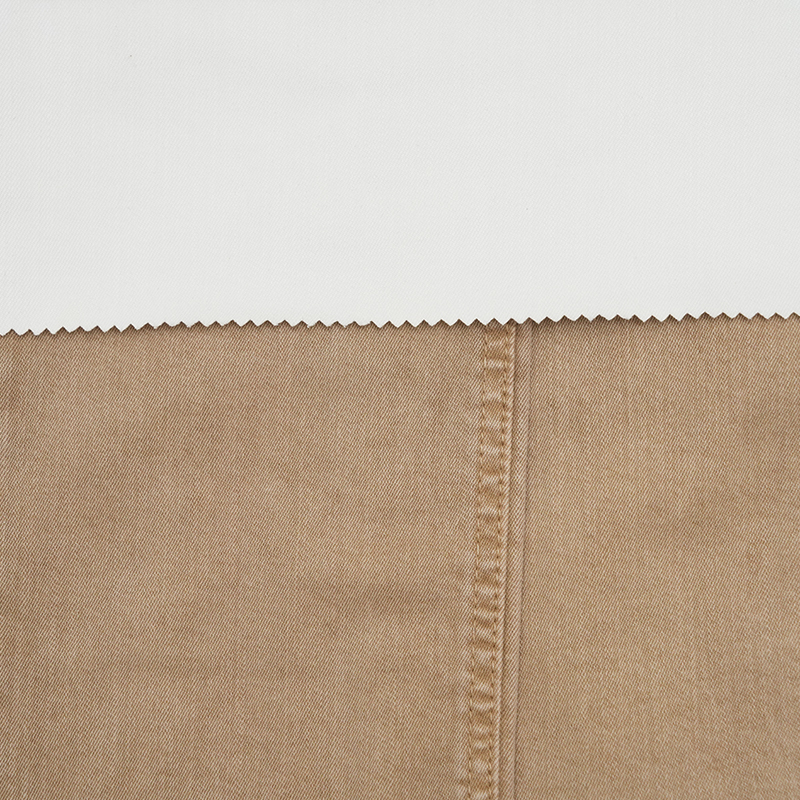Production of various high-end fabrics reaches 7 million meters annually, including a wide range of fashionable new products and exquisite items, with a broad coverage of color patterns.
Cotton Blended Dyed Fabric: A Comprehensive Guide
2025-08-08
Cotton blended dyed fabric is a popular choice in the textile industry due to its versatility, comfort, and durability. Combining cotton with other fibers enhances its properties, making it suitable for various applications, from fashion to home textiles. This article explores the characteristics, benefits, types, and care tips for cotton blended dyed fabrics while providing valuable insights for buyers and enthusiasts.
What Is Cotton Blended Dyed Fabric?
Cotton blended dyed fabric is made by mixing cotton with synthetic or natural fibers such as polyester, rayon, linen, or spandex. The blend is then dyed to achieve the desired color. The combination of fibers enhances the fabric’s performance, offering improved strength, wrinkle resistance, and moisture-wicking properties compared to 100% cotton.
Common Cotton Blends
| Blend Type | Characteristics | Common Uses |
| Cotton-Polyester | Durable, wrinkle-resistant, retains color well | T-shirts, dresses, workwear |
| Cotton-Rayon | Soft, drapes well, breathable | Blouses, skirts, lightweight apparel |
| Cotton-Linen | Breathable, textured, slightly rough but softens over time | Summer clothing, home textiles |
| Cotton-Spandex | Stretchy, form-fitting, retains shape | Activewear, leggings, fitted tops |
Benefits of Cotton Blended Dyed Fabric
-
Enhanced Durability
Blending cotton with synthetic fibers like polyester increases the fabric’s strength, making it resistant to wear and tear. -
Improved Wrinkle Resistance
Unlike pure cotton, blends (especially with polyester) resist wrinkling, making them ideal for travel and everyday wear. -
Better Moisture Management
Cotton absorbs moisture, while synthetic fibers like polyester wick it away, keeping the wearer dry and comfortable. -
Vibrant and Long-Lasting Colors
Dyed cotton blends retain color better than pure cotton, reducing fading even after multiple washes. -
Cost-Effective
Blended fabrics are often more affordable than 100% natural fibers while maintaining quality.
How Cotton Blended Fabrics Are Dyed
The dyeing process for cotton blends depends on the fibers involved. Since cotton is a natural fiber and synthetics like polyester are man-made, different dye types are used:
- Reactive Dyes (for cotton): Provide bright, long-lasting colors.
- Disperse Dyes (for polyester): Penetrate synthetic fibers effectively.
Blended fabrics may undergo:
- Union Dyeing: Using two different dyes in one bath to color both fibers.
- Cross Dyeing: Applying separate dyes to create multi-toned effects.

Applications of Cotton Blended Dyed Fabric
Cotton blends are widely used in:
- Fashion: T-shirts, dresses, jeans, and activewear.
- Home Textiles: Bed linens, curtains, and upholstery.
- Workwear: Uniforms and industrial clothing due to durability.
How to Care for Cotton Blended Dyed Fabric
Proper care ensures longevity and color retention:
-
Washing:
- Use mild detergent.
- Wash in cold water to prevent fading.
- Turn garments inside out to protect the dye.
-
Drying:
- Air-dry when possible to maintain fabric integrity.
- If using a dryer, opt for low heat.
-
Ironing:
- Use medium heat to avoid damaging synthetic fibers.
-
Storage:
- Keep in a cool, dry place away from direct sunlight.
Choosing the Right Cotton Blend for Your Needs
When selecting a cotton blended fabric, consider:
- Purpose: For activewear, cotton-spandex offers stretch; for breathability, cotton-linen is ideal.
- Climate: Polyester blends retain heat, while linen blends are better for warm weather.
- Maintenance: If easy care is a priority, wrinkle-resistant blends are preferable.
Conclusion
Cotton blended dyed fabric offers the best of both worlds—combining the comfort of cotton with the performance of synthetic or other natural fibers. Whether for fashion, home décor, or workwear, these fabrics provide durability, vibrant colors, and ease of care. By understanding the different blends and their properties, you can make informed choices for your projects or wardrobe.
By following proper care techniques, cotton blended dyed fabrics can maintain their quality and appearance for years, making them a smart and sustainable choice for consumers.

 English
English 中文简体
中文简体 Tiếng Việt
Tiếng Việt




















